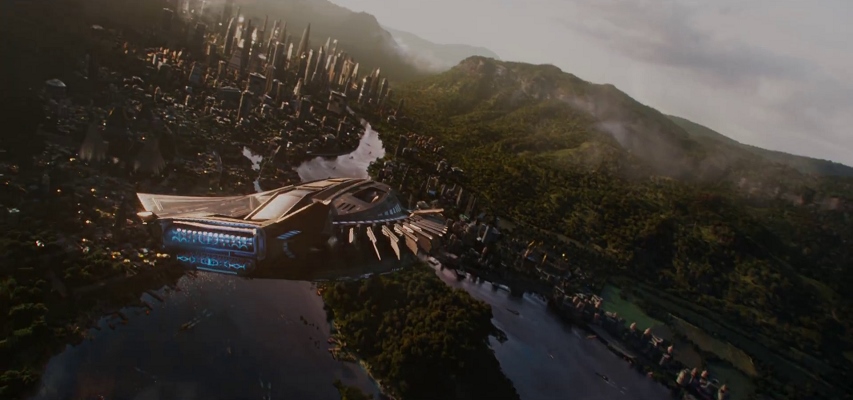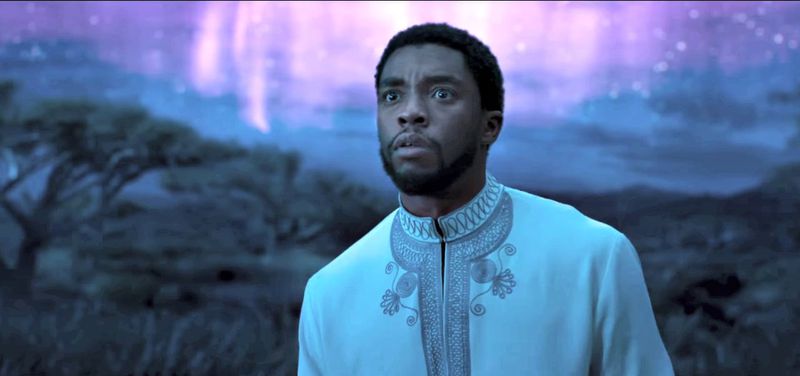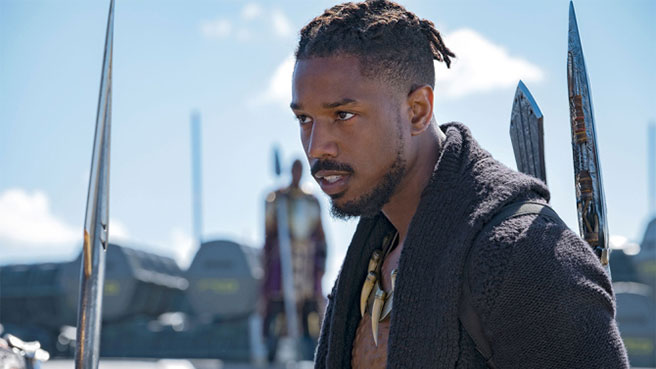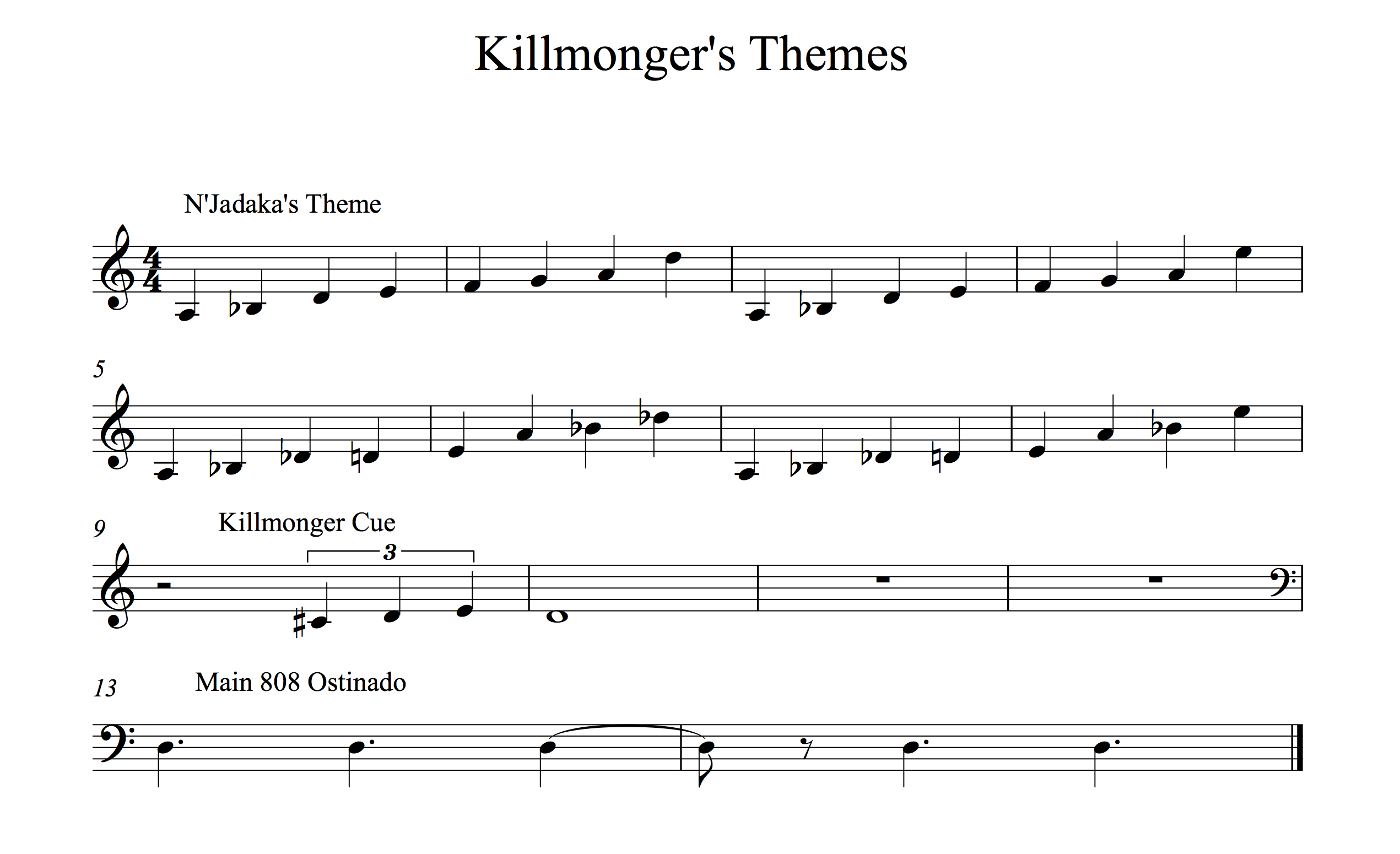Straight Outta Wakanda: How Black Panther’s Score Solved Marvel’s Music Problem
While Marvel movies have certainly been commercial successes, Marvel has thus far largely missed the mark when it comes to the meaningful integration of music into their films. Until, that is, the release of Black Panther, the score of which fixed Marvel's music problem.
_______________________________
Guest post by Charles Burchell from Soundfly's Flypaper
Spoiler alert! This article contains spoilers for the movie Black Panther. If you haven’t seen the movie, you may want to stop and bookmark this page to read the article once you’ve seen it.
Marvel’s Black Panther, the long anticipated film about a fictional African king and superhero, was released only a couple weeks ago and has already set box office records. The film has been hailed as one of Marvel’s most socially relevant and poignant films to date. Director Ryan Coogler was tasked with bringing the futuristic Kingdom of Wakanda, the homeland of the film’s various protagonists, to life on the big screen. To do this, he enlisted the help of a stellar cast of actors such as Chadwick Boseman, Lupita Nyong’o, Michael B. Jordan, Danai Gurira, and many others, as well as the emerging star composer Ludwig Göransson.
While reading on, take a listen to Göransson’s original score, and picture yourself traveling by helicopter, or by vibranium shuttle, over the valleys of Wakanda.
Marvel’s music problem
Unlike in other blockbuster adventure franchises like Star Wars, Indiana Jones, orJurassic Park, music has never really been an integral part of the storytelling process in the Marvel Cinematic Universe (or MCU). In fact, with the exception of Guardians of the Galaxy, most of the music appearing in their films goes unnoticed and fails to follow essential plot points in the story.
Their Netflix series tend to do a better job of integrating music in a more meaningful way. For example, Marvel’s Luke Cage used both classic and current hip-hop tracks to bring the environment of modern-day Harlem to life. With Luke Cage being the MCU’s first attempt at spotlighting a character who deals with the complexities of the black experience, it was great to see how African-American literature and music was woven seamlessly into the overall narrative. That being said, though, it’s hard to think of a Marvel original score that really stands out. Luke Cage, Iron Fist, and other episodic series have all relied heavily on licensed songs from popular artists. The most memorable theme music from an MCU score is probably that of The Avengers, which was revisited and reappropriated in the 2015 sequel, Avengers: Age of Ultron.
One of the main issues facing Marvel’s music is its lack of thematic continuity. With the exception of The Avengers’ theme, most of the musical character cues (leitmotifs) change from film to film, and the main musical themes in the movies are rarely ever used as marketing materials — something they rightly emended in the lead up to Black Panther’s release. Film music today is executing at such a high level of quality that the competition for creating lasting impressions through a musical scoreis an important aspect to consider.
With music from Run the Jewels, Vince Staples, and Kendrick Lamar, the dynamic world of Black Panther was framed in a very modern context from the get-go. After seeing the film (three times), I can definitely say that Ludwig Göransson’s score truly succeeded in bringing the world of Wakanda to life by creating memorable themes for major characters as well as events throughout the movie.
Göransson’s mission
In speaking with Pitchfork, Göransson said his first task when preparing to compose the music for this film was to travel to Africa and research the music, culture, and instruments of the various African nations himself. As director Ryan Coogler points out in several interviews, he and his whole team had to do extensive research on the continent in order to gain a deeper understanding of the world he would help to create.
In a piece Coogler did for Vanity Fair, he talks about how the movie explores contrasts and dualities. One of these dualities is tradition versus innovation. Wakanda is a land steeped in ages-old ritual, but embraces the technological and scientific frontiers of the future, thanks in large part to their abundance of an incredibly powerful natural resource called vibranium. Vibranium has allowed Wakanda to make medical and technological advances thousands of years ahead of even the most advanced western nations, but to the outside world, Wakanda appears to be a third-world nation of farmers. This dichotomy serves as the foundation on which the film’s main story arcs are built. In the world of Black Panther, nothing is as it seems.

+ Read more on Flypaper: “The Best Guitar Music in the World is Coming from Agadez”
Göransson’s mission, therefore, was to consider all of these elements and find suitable, and exciting, ways to combine traditional African musical styles, timbres, and rhythms, with the modern high-fidelity production and orchestral arrangementsyou’d expect from an action-packed blockbuster. The result is a lushly emotive and texture-rich sonic environment that sets the stage for this African epic drama, and places Wakanda somewhere between the distant past and a future that is beyond imagination.
Although most of the score was produced in Ableton Live and Digital Performer, using samples and digital instruments, Göransson enlisted a 92-piece live orchestra, a 40-person choir, and over 40 different musicians playing traditional African instruments to illuminate his vision. What makes this score particularlymemorable is his use of leitmotifs, or musical cues that represent specific characters and places in the film. These melodic or rhythmic themes are interwoven throughout the film’s narrative and develop and transform alongside the characters.
This technique is nothing new. In fact, the term “leitmotif” was popularized by describing the music of German composer Richard Wagner, who changed the sound of orchestral music by creating scores that pushed beyond the technical limitations of his time. (Wagner himself did not care for the term.) It’s therefore no surprise that Wagner’s music has been used so prevalently in cinema. The innovation that Göransson brings to the table is being able to synthesize thousands of years of musical information into something that sounds cohesive and honors both African and African-American musical traditions in an authentic way.
To understand how this music informs the narrative of Black Panther, I’ve broken down the main musical themes appearing throughout the score and how they enhance the events on screen.
The Wakanda Theme

The story of Black Panther is really the story of Wakanda. It’s a tale of family, royalty, revolution, xenophobia, vengeance, betrayal, and of course, superheroes. Wakanda is a nation on the verge of changes in leadership and ideology, but still very much governed by their traditionalist views. There are a few musical cues that represent the ethos of Wakanda and reflect its values as a society.
Upon entering Wakanda for the first time, we hear Senegalese songwriter Baaba Maalsinging a beautiful song about the death of an elephant, a metaphor that references the current transition in power. The film actually opens in the aftermath of Captain America Civil War in which T’Chaka, the father of T’Challa (the Black Panther) and king of Wakanda, is murdered at a United Nations conference in Vienna. T’Challa returns home to reluctantly accept his place at the throne of Wakanda.
According to Göransson, who toured with Baaba Maal for a week while researching music, this song is a metaphor for how a new ruler, much like the elephant, must be patient in their actions and take their time when making decisions. The Baaba Maal theme can be heard at the beginning of the film, as well as in its final act — in both instances, this theme represents a transition and the beginning of a new era.

A few other thematic devices used to represent Wakanda and its way of life are instrumental and timbral choices. Whenever a scene is focusing on the daily lives of Wakandians, we hear the kora, kalimba, and baliphone, all traditional African instruments from various parts of the continent, as well as pan-African polyrhythmic percussion. The chord progression and melody highlighted above tends to signify a call to action, so I’ve called this the “Wakadian Royal Theme.” We hear this typically occurring during a moment of intense action, and it’s usually followed by “T’Challa’s Theme” (below).
Song References in the Score:
“Wakanda Origins,” “Wakanda,” “A Kings Sunset,” “A New Day,” “Glory to Bast,” “Spaceship Bugatti.”
T’challa’s Theme

T’Challa, better known as the Black Panther, is the film’s main protagonist. He is both the king of Wakanda, and the superhero charged with protecting this nation. Therefore, when we hear his thematic motifs, it’s a mix of all these elements. His main melodic theme is usually punctuated and accented by horns to signify royalty, whereas his main rhythmic themes are often played on the talking drum.
The talking drum, an instrument typical in West African countries, is used prominently throughout the score to communicate T’Challa’s name, which itself works naturally as a displaced series of eighth-note triplets. The rhythms of the talking drum ensemble are layered with 808 kicks at certain moments, possibly to suggest that T’Challa’s world is one in which the past and future are perfectly synthesized. When all of these elements combine — the horns, percussion, and electronic drums — usually at the height of an action scene, it feels heroic.

It’s important to understand the role that the triple plays in African music, as well as the score. Most western music relies on organization via duple meter (2/4, 4/4), but traditional African music usually heavily leans on triple meter (6/8, 12/8) as well as the polyrhythmic overlay of both. In African music, even if you count quarter notes, the underlying triplet pulse is what determines the feel of the music. This is an important distinction to understand as we listen to the different themes.
There are two melodic themes associated with T’Challa. The first is his main heroic theme, which uses the notes of a minor pentatonic scale (1,♭3, 4, 5,♭7) but with a♭6 instead of a♭7. The second theme, which I’ve labeled “T’Challa’s theme song,” uses a major pentatonic scale (1, 2, 3, 5, 6) but avoids the major 6th. The pentatonic scale can be found in various traditional music styles from all over the continent of Africa, and is definitely a characteristic sound of African music. T’Challa’s main theme can be heard all throughout the movie and always signifies either a challenging or triumphant moment for the Black Panther. The triumphant moments are usually orchestrated with horns and the challenging moments with strings, another trope of Hollywood action film scoring.
“T’Challa’s theme song,” in my opinion, represents the return of the prodigal son. In one of the most visually stunning scenes in the movie, T’Challa descends from his ship and steps into Warrior Falls, where he looks upon an entire cliff side of Wakandians cheering and singing this theme. In this moment, the theme is supplanted visually with notions of “grandness” and a sentiment that T’Challa is loved by his people — which sticks with us throughout the film, even when we doubt his heroism.
Song References in the Score:
“Royal Talon Fighter,” “Warrior Falls,” “A New Day,” “United Nations,” “Busan Car Chase,” “Killmonger vs. T’Challa,” “The Great Mound Battle,” “Phambili.”
Ancestral Plane

One of the biggest themes in this film is honoring and respecting our ancestors. The mantle of Black Panther is an ancestral gift passed from one king to the next after undergoing a few rights of passage — the final being traveling to the Ancestral Plane. The new king must visit this afterworld briefly to commune and seek advice from loved ones who have passed away. It is a prevalent idea in African spirituality that your ancestors are omnipresent and can be called upon to draw strength from in difficult situations. Throughout the film, multiple characters reference their ancestors, either to critique them or to praise them.

We hear the theme for the Ancestral Plane early on and then throughout many other scenes, signifying that the ancestors are always present. The first time we hear the theme fully fleshed out is when T’Challa visits the Ancestral Plane for the first time. The theme is usually orchestrated with strings and is sometimes played over a drone (usually D). Every time we visit this place in the film, it represents a significant moment of reconciliation. Both T’Challa and the film’s assumed antagonist, Erik “Killmonger” Stevens, are each on their own quest to honor their ancestors, and their decisions are heavily influenced by the responsibility they feel most specifically to their fathers.
Song References in the Score:
“Ancestral Plane,” “Royal Talon Fighter,” “Wake Up T’Challa,” Waterfall Fight, “A Kings Sunset,” “Killmonger’s Dream,” “Killmonger vs. T’Challa,” “The Great Mound Battle.”
Killmonger’s Theme

Erik “Killmonger” Stevens, whose real name is N’Jadaka, is probably the MCU’s best example of a tragic villain. His complex, multifaceted quest to take over Wakanda is not simply for power, but to empower people around the world to fight against injustice. The lost son of Wakanda, Killmonger’s quest is also one of reclaiming his birthright and his country (a metaphor for African Americans who have been displaced from Africa for centuries).

Killmonger’s themes are a combination of a few elements. There’s a simple melodic theme that first introduces the character, based off the phrygian mode, and is played on a tambin (a.k.a. a fula flute) processed with some digital effects. Interestingly, the melody derives from the “Ancestral theme,” although it’s played through ghostly reverbs and delays, as if to suggest that N’Jadaka is still connected to his ancestors but only in a very distant way. The two other elements that make up this theme are a distorted 808 ostinato and a quarter-note triplet hit used to punctuate big scenes. All of these elements come together into a trap beat with rapid-fire hi-hats, distorted 808s, and the tambin weaving in and out.
This theme, in my opinion, suggests many things about the character of Killmonger. He is someone who has been shaped by his harsh, urban environment, but still retains a direct link to his ancient ancestry. The tambin represents his soul longing to reconnect with Africa, and the trap beat exemplifies that his mindset is framed by the shared urban experience of many young black Americans.
What Göransson does so cleverly in combining these elements is to show how they are both connected and different — the rhythms of trap music are just extensions of the African rhythms that permeate this entire score. However, Killmonger’s theme also serves as a juxtaposition to T’Challa’s theme, which parallels how these characters interact in the film. Killmonger aims to disrupt the Wakandian way of life and show them the reality of a world they’ve left behind, while T’Challa hopes to preserve and protect Wakanda from the influence of the outside world. Both seek glory for their people, via conflicting means.
Song References in the Score:
“Killmonger,” “Killmonger’s Challenge,” “Questioning Klaue,” “Burn It All,” “Killmonger’s Dream,” “Killmonger vs. T’Challa,” “The Great Mound Battle.”
Some lesser themes
Some of the less frequent but still important musical themes in the movie are the Dora Milaje and Jabari themes. The cue for the Dora Milaje is taken from a group of Senegalese women doing what can best be described as a “yipping” sound. It’s meant to represent the warrior spirit of this all-female African secret service. Anytime the Dora Milaje are seen in combat, this theme plays.
Song References in the Score:
“Glory to Bast,” “Casino Brawl,” “The Great Mound Battle.”
The Jabari are a warrior tribe that live in the mountains of Wakanda. They operate autonomously from the rest of Wakanda and have shunned the use of vibranium for centuries. The Jabari first enter the movie to challenge T’Challa in ritual combat. They are seen chanting and grunting to call upon the power of their god Hanuman, who is represented by a white gorilla. Their theme is an aggressive mix of drums, chanting, and ceremonial horns (likely a Yoruba ceremonial horn). The drums accent various polyrhythms before settling into a 6/8 groove. The second time the Jabari appear in action, the theme is fully orchestrated and enlivened with modern electronic production. This moment, in my opinion, during the film’s final battle, is the highlight of the score. It’s the perfect blend of all of the musical elements that make up the score, synthesized into one powerful moment.
Song References in the Score:
“The Jabari,” “The Jabari Pt. II.”
At various points in the film, cuts from Kendrick Lamar’s curated soundtrack to the film are heard in tandem with the score. Throughout the soundtrack, which is considered a companion piece to the movie, there are also references back to the score. In some instances, both the Killmonger and Dora Milaje themes can be heard. Lamar’s lyrics may also be interpreted to reflect the dichotomy of both Wakanda kings, T’Challa and Killmonger — one tasked to lead his people, and the other tasked to free his people. Lamar’s in-house producer, Sounwave, worked closely with Göransson during the process of making this album, and the synergy of both musical works only enhances the viewing experience. You can read more about Lamar’s soundtrack album here.
As the movie continues to set box office records and create conversation, I believe the depth of its cultural impact is still yet to be fully realized. One thing is certain: the cultures and music of Africa have never been celebrated at such a high level by Hollywood, and the change is refreshing. Ludwig Göransson’s score, as well as the work of Kendrick Lamar and his production team, should be the new standard for Marvel.
Hopefully we’ll see them work together in the future for a Black Panther sequel. For now, though, you can listen to my Welcome to Wakanda playlist below:
Really great and interesting read about Black Panther and the music behind it. Super engaging. Another interesting read about Black Panther: https://mindfray.com/debate/right-message-political-analysis-of-black-panthers-killmonger/